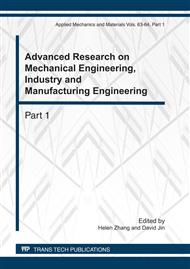p.3
p.8
p.12
p.17
p.21
p.25
p.29
p.33
Business Process Reengineering and Functional Design of Information System Based on DFSS: A Case Study of Pharmaceutical Wholesale Enterprise
Abstract:
Firstly, this paper studies the integration and implementation of design for six sigma (DFSS) and business process reengineering (BPR), proposes the idea of DFSS-BPR integration framework and implementation framework of process reengineering; simultaneous it analyzes the process of business process reengineering of DFSS-based good supply practice (GSP), builds the optimized major business process of GSP; and finally makes functional adaptation design of GSP information system based on the optimized GSP business process. The results of this study are useful for the analysis, design and smooth implementation of consequent GSP information system.
Info:
Periodical:
Pages:
12-16
Citation:
Online since:
June 2011
Authors:
Price:
Сopyright:
© 2011 Trans Tech Publications Ltd. All Rights Reserved
Share:
Citation:


